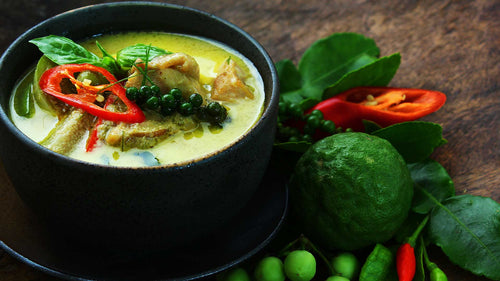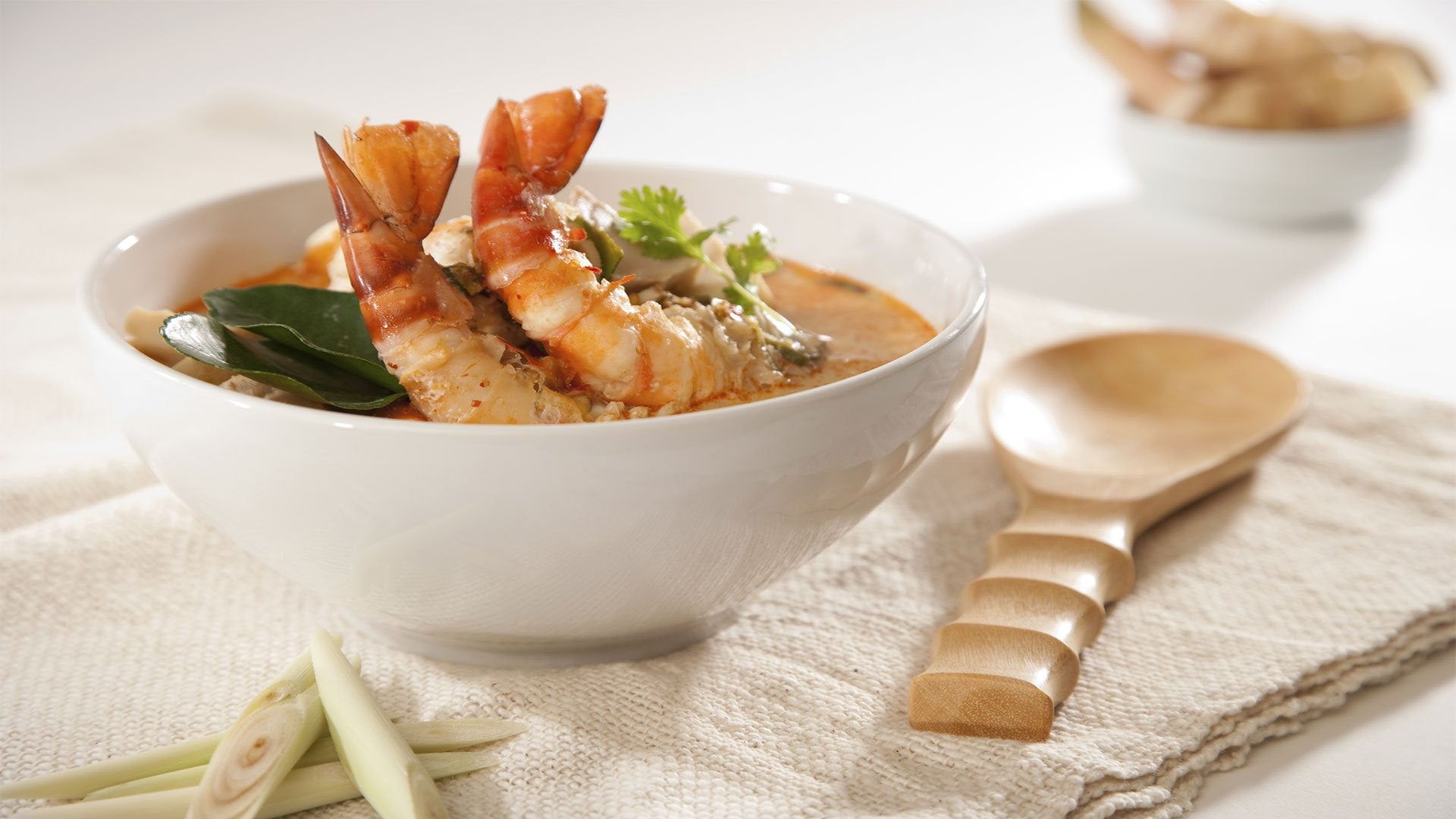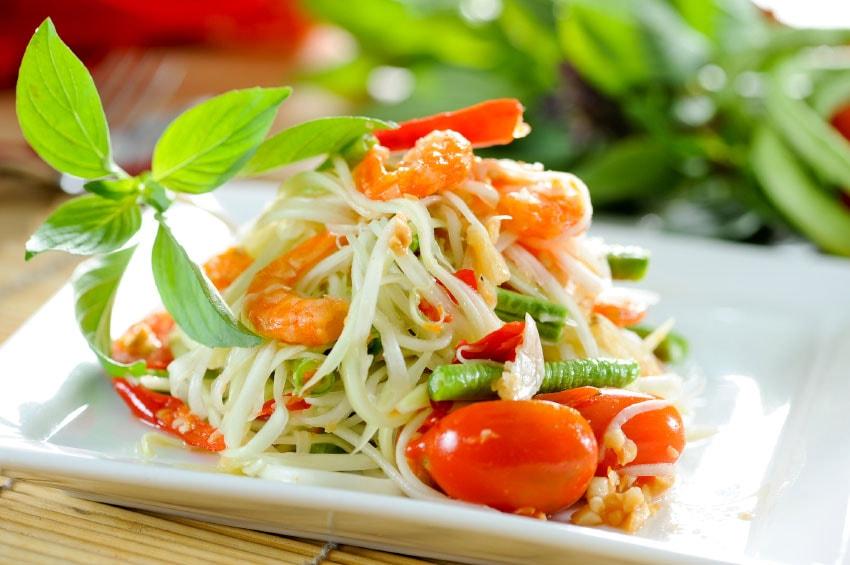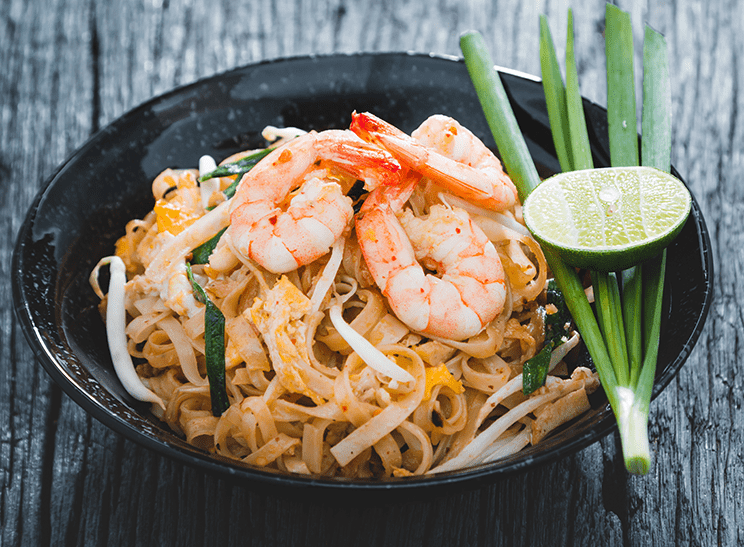Tamarind is an ingredient you can find in a selection of Asian recipes from Pad Thai, Indian curries or chutneys. You might be surprised to know you can even find it in your favourite British condiments like brown sauce or worcester sauce. It’s well known for its distinctly sweet and sour flavour and used extensively in Thai and Indian cuisine but what exactly is tamarind and how exactly should it be used for cooking? In this blog, we’re sharing everything you need to know about tamarind from how it tastes, the different types and how to use it in your cooking!
What is tamarind?
Native to Africa and Asia, tamarind is a seed pod which comes from the tamarind tree. Each pod contains seeds surrounded by a soft flesh which is sweet and sour in flavour, similar in texture to that of a date or prune. Tamarind seed pods are considered fruits. That means tamarind can be consumed in its raw but ripened form as a sweet fruit snack but this fruit is also an ingredient used widely in Southeast Asia, India and Africa and can usually be found in a pulp, paste, block or fresh form.

What does tamarind taste like?
Tamarind has a flavour which can range from sweet to sour depending on a number of factors, the main factor being the maturity and ripeness of the fruit. Like many other fruits, tamarind is usually sweeter the more it has aged and ripened. Before ripening, it tends to have a more sour and tangy taste, similar to the tart citrus of a lime fruit but with the sweetness of a pineapple.
The flavour of tamarind also changes when combined with other ingredients which compliment it and bring out its natural flavour, for example combining tamarind in recipes which use palm sugar can help diffuse some of the sour taste while combining it with citrus ingredients may help bring this out more.
Some ingredients which notably go well with tamarind in South and Southeast Asian cuisine include lychee, soy sauce, mangoes, limes, ginger and fish sauce.
What are the different types of tamarind?
There are technically two types of tamarind: sweet and sour. As mentioned before, the flavour of tamarind depends on the age and ripeness of the fruit. Sour tamarind is more commonly produced across the world and in India, while sweet tamarind primarily originates from Thailand. Despite this, both Thai and Indian cuisine typically use the sweet variety of tamarind in their respective recipes.
What is tamarind used for in cooking?
You may have gathered by now that Thailand and India are notably the most common places where tamarind is used in cuisine. From achieving the perfectly sweet and sour flavour of an authentic Pad Thai and variations of Massaman Curry to a signature Indian Tamarind Sauce Fish Curry (also known as Chepala Pulusu) there are so many ways to incorporate this delicious ingredient into Asian recipes. While the most obvious ones are soups, stews and curries, tamarind also works great in chutneys, homemade sauces, in marinade mixes, noodle stir-fries and more!

How do you prepare fresh tamarind for cooking?
Tamarind as a food product is either sold as a paste, puree, pulp or concentrate and which type is used can either be down to personal preference or what a recipe requires. For the most part, tamarind paste and puree are the same in nature and can almost be used interchangeably. These are also the easiest types to use and can be readily measured into recipes.
Tamarind concentrate on the other hand, is much more intense in flavour and needs to be prepared before adding to recipes. Luckily this is as simple as combining one part tamarind concentrate with two parts water to create a paste-like consistency.
Tamarind blocks on the other hand, have a completely different use altogether. While sharing the same flavour of the other forms of tamarind, tamarind blocks are prepared quite differently to produce tamarind water for use in recipes. This is done by soaking the tamarind block in warm water, mixing or blending together and sieving away and pulp or residue. This tamarind water can be consumed alone, as a base for soups, broths and other slow cooked recipes.











Leave a comment